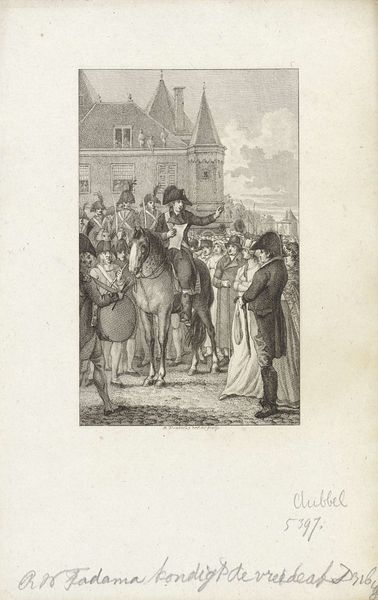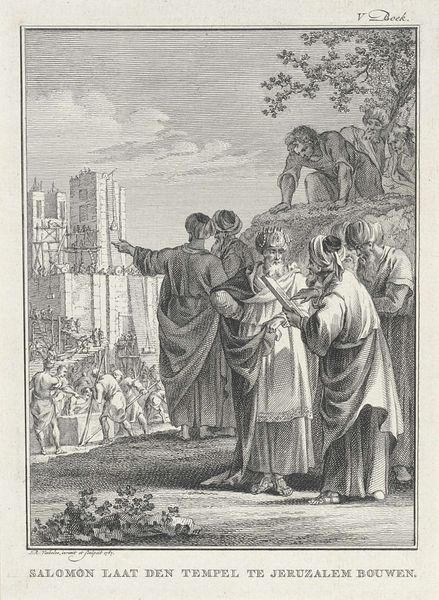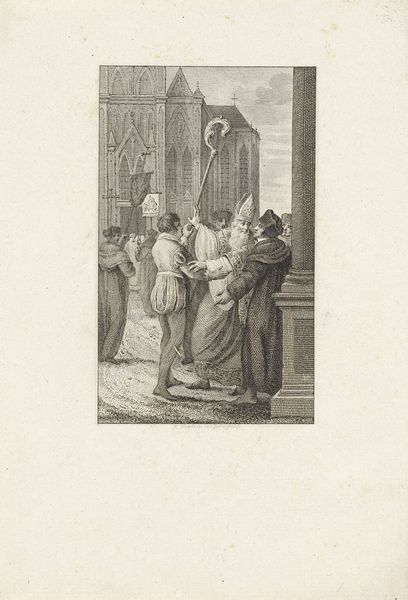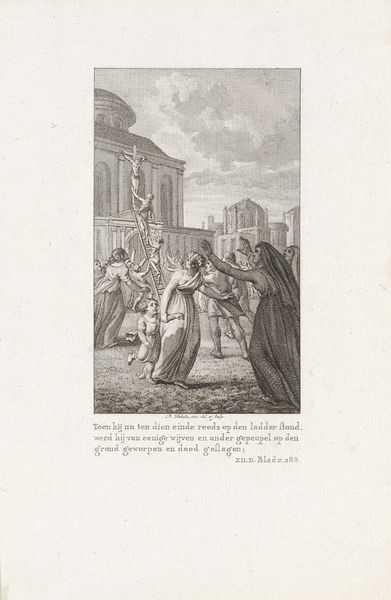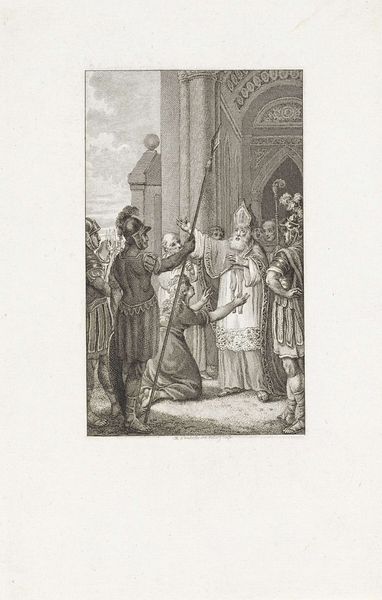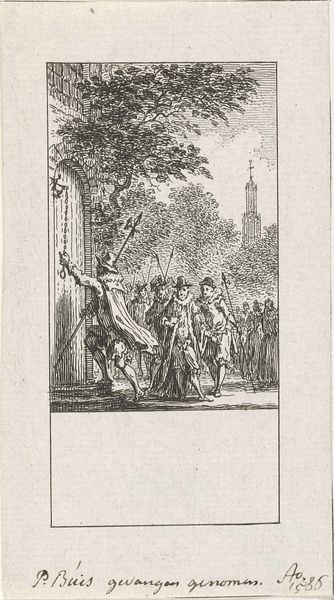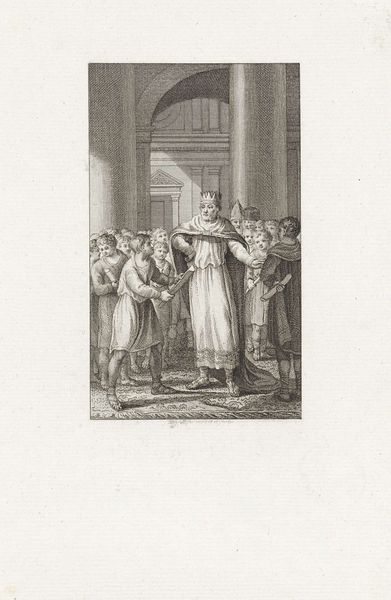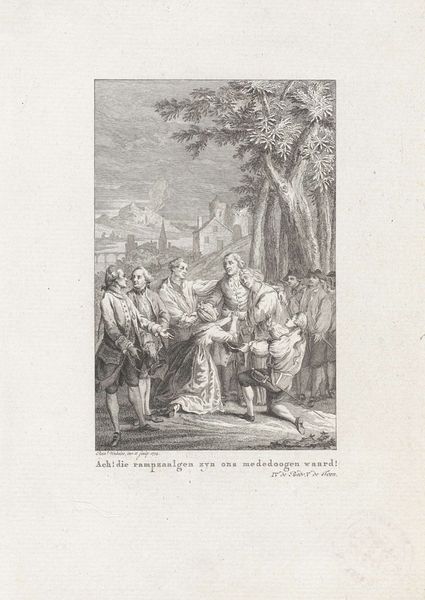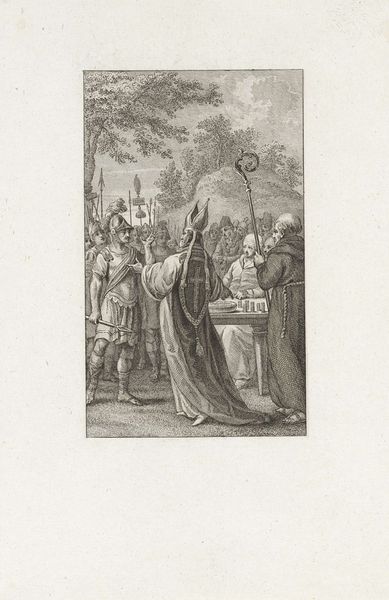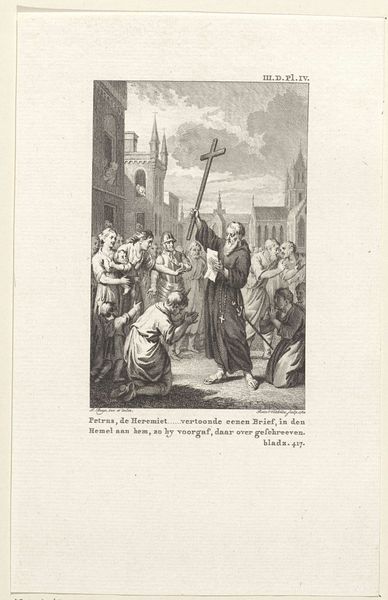
print, etching, engraving
#
portrait
# print
#
etching
#
old engraving style
#
genre-painting
#
history-painting
#
engraving
Dimensions: height 243 mm, width 161 mm
Copyright: Rijks Museum: Open Domain
Editor: So this etching, "Theodorus on a Donkey Surrounded by Bishops and Monks," made in 1804 by Reinier Vinkeles, has such a detailed, historical feel. The composition looks…odd. What do you make of it? Curator: This image teems with encoded meanings. The choice of a donkey, for instance, isn't accidental. Donkeys often symbolize humility, perhaps even a conscious rejection of worldly pride for Theodorus. Yet, consider the historical context - what would riding a donkey *mean* to an audience familiar with biblical stories of Christ's entry into Jerusalem? Editor: A parallel, maybe? A deliberate echo of something grander? Curator: Precisely. And note how Vinkeles surrounds Theodorus with clergymen, yet emphasizes the encounter with a single monk on foot. The transfer of something – perhaps a document or relic – taking place? This could represent a specific moment of succession or delegation of power, steeped in symbolic importance within the religious order. What emotions do *you* gather from this scene? Editor: Well, I see respect, definitely a ritual. The way everyone is arranged gives it a formal, staged vibe, but there’s something also very earthy about that donkey... it is quite the juxtaposition. Curator: Yes, a brilliant discordance. Earthy humility elevated into solemn ritual. Consider how the artist weaves together these threads: the sacred space indicated by the gothic architecture in the background with a man of power riding a donkey! Now *that's* a visual metaphor! What’s your final reflection about it? Editor: I definitely didn’t expect so much meaning to be embedded in just one image. Seeing it just as a historical record would have been selling it short. Curator: Absolutely. Visual symbols are powerful cultural echoes. We interpret them, we reinterpret them, and, in doing so, perpetuate their significance across time.
Comments
No comments
Be the first to comment and join the conversation on the ultimate creative platform.
